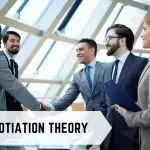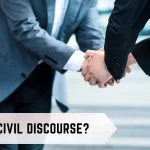
By Howard Stern
Using Education to Reach Resolution in Palestinian-Israeli Conflict
When I started out as a mediator, I soon learned that parties don’t always tell the truth and parties do not always disclose all the facts of a case. Only by exploring areas where the parties don’t want to go, do I find underlying positions driven by undisclosed influences. These may well otherwise remain hidden throughout the mediation process, often masked behind a rhetoric of demands for justice or rights.
Working in the Middle-East, I see the similar processes at work on a regional, national, and international scale. The ArabIsraeli conflict is one I describe as the most entrenched multi-party conflict in human history. Many think it started in 1948 when the League of Nations, having taken over from the British in governing Palestine, created a Jewish homeland called Israel. In truth it has been going on much longer.
The conflict is complicated and the number of parties involved today is considerable. However, for the sake of this article, I want to focus on the two principal parties: the Israelis and Palestinians. Palestine is also known as the West Bank (of the River Jordan), Occupied Territory or Disputed Territory, depending on your position. It is ruled by its own Government called the Palestinian Authority who also administers Gaza, a small strip of land on the Mediterranean coast. The Palestinian population is almost exclusively Arab and Muslim. The Christian population in the West Bank is now just 1.2% and in Bethlehem, the birthplace of Christianity, it has fallen dramatically from 85% in the late eighties to about 9% today. This fall has been attributed to both economic problems stemming from the conflicts and, more significantly, the rising tide of radical Islam and persecution. Working with both Israelis and Palestinians, particularly young Palestinian Christian adults, I have seen first-hand the impact of radical Islam on this minority group.
My work involves educating and encouraging creative thinking and exploring alternatives for a better future, including the use of ADR strategies. The current generation of young adults is the first to have grown up with the internet and they are now well connected and able to chat to people around the world. They have seen what happened in Egypt where Facebookers instigated the overthrow of President Mubarrak. They witnessed the fall of Gadaffi in Libya. They now nervously watch the state of affairs in Egypt (to their south) and the emerging civil war in Syria (to their north). They see democracy at work in the west and even with its inherent faults, can see it offers far more than the tribal regimes they live under today. With this global perspective, they are beginning to question their long term future.
The Arab-Israeli dispute is principally about land, or so we are often led to believe. In truth the dispute is ideological, for the very existence of the State of Israel is anathema to the majority of Arab and Persian Muslims, especially those of fundamental disposition. It is also a serious bone of contention to the Arab families whose ancestors lived there and were displaced when the State was formed, despite the fact that Jews have always lived there. It is well known that some 700,000 Arab refugees and displaced persons were created by the newly formed State. However, as the new State of Israel came into being on 15th May 1948, Jewish refugees numbering 850,000 were also sent quickly in the opposite direction, many in just the clothes they wore, from neighboring Arab countries. This said, today there are some 1.2 million Arabs in Israel working and living alongside their Jewish neighbors. Arabs are represented in the Knesset (Government), in the Judiciary and are involved in all aspects of the administration of the State including serving in the IDF, the Israel Defence Force. Israel provides medical care to thousands of Palestinians, some 40 tons of aid each week into Gaza, and works in collaboration with Palestinian defense and security forces to reduce outbreaks of fighting on the borders.
This was well demonstrated in April this year when Israel came under sustained attack from Islamic Jihadists operating inside Gaza who randomly launched more than 250 rockets on Israeli villages and schools in a period of four days injuring many. When Israeli forces responded with a very high-tech surgical strike using drones and military aircraft killing just the jihadists, the subsequent uprising by Gazan citizens was actually policed by Gazan security forces – an admirable effort – which prevented a clash between them and IDF soldiers.
So where is this conflict heading and what can be done? We’ve had the Oslo Accords, the Camp David Agreements, Tony Blair’s negotiating team and the Quartet of Nations all trying to secure peace. Numerous Presidents and Prime Ministers have all come and gone over the decades and given the conflict their best efforts. So what is it about this particular conflict that’s outlasted all others? Significantly, what could or searching For truth in a World Full of lies & misconceptions by Howard SternFall 2012 | 33 should be done that is different, to try to create peaceful coexistence?
I am not a particular fan of Tony Blair, but I do remember well one of his electioneering campaign speeches in the 1990s when he proclaimed the way forward was, “education education education.” This, I submit, is exactly what is required now to counter the prolific lies, deceptions, and misinformation endemic in many parts of the region – and indeed the general levels of ignorance that exist. On both sides the children and young people grow up with distorted views of truth, the history and reasoning behind what they live with and see around them.
Misaligned Misconceptions
Working with young Palestinian adults I am always shocked at how little they truly know or understand about the history of their conflict! From an early age they have been indoctrinated with stories passed down by ancestors and a highly biased education system. One only has to look at Palestinian school books to see how young minds are being misinformed from a very young age. Arabic TV stations show children’s cartoons with strong ideological messages embedded in them, which only serve to perpetuate an already fragile situation.
Within Jewish culture too there is fear and suspicion of their Palestinian counterparts. Jewish children grow up learning to run and hide from rocket attacks, or endure the many daily security searches in shopping malls, schools, colleges, and bus stations simply because of the possible risk of a terror attack. Tel Aviv bus station for example, is a stark reminder of the ever present threat, with its signs to the bomb shelters everywhere. Jewish children grow up living in a State with security everywhere, propagating the belief about the perceived enemy on the other side of that tall, grey, concrete wall which now separates large stretches of Palestine from Israel.
These misconceptions are perpetuated by both sides and often result in negative consequences and actions void of the requisite compassion and diplomacy needed to actually resolve this conflict.
Emphasizing Education to Move Towards Resolution
In working with the Palestinian youth, teaching them to think differently is a big challenge. I find myself using all my skills as a mediator, combined with great patience, as I sensitively try to question and test orthodox thinking and get them to rethink its roots. The Jewish people have endured centuries of persecution. History documents their plight and struggle to survive, culminating in the holocaust. Therefore it is somewhat ironic that it was the holocaust itself, supported strongly by the Muslim Grand Mufti of Jerusalem, that caused the world to recognize the need for a Jewish State. His policy backfired beyond his imagination. So like a child perpetually bullied in the school playground, there is, deep in Jewish psychology, a strong fight response today and this defensive state of mind is in many ways quite understandable. Sometimes though I fear the bullied becomes the bully in certain situations. Equally, the Palestinians need to understand their neighbors and be honest about their history.
To end this conflict both Israelis and Palestinians must also commit to educating their young as to the truth and reward peace and reconciliation, rather than propagating Have an article, story, comment, or topic suggestion you would like to share with ADR Times? Email [email protected] or contribute online at: www.adrtimes.com/connect Howard Stern Operating primarily in the UK and Europe, Howard works exclusively in conflict and dispute resolution. His work follows a 25 year career in project management, training and development. Howard is a member of the British Civil Mediation Council, accredited by the Centre for Effective Dispute Resolution as a mediator, and affiliated with various NGOs. His love of travel and the great outdoors has taken him to many places, sometimes in pursuit of his wider professional interests in international politics, and to explore the global pressures facing society as it copes with rapid population growth. There are wonderful examples of this such as the Yad ba Yad (Hand in Hand) School in Jerusalem in which both Palestinian and Jewish students are educated together and pro-actively engage in reconciliation work. It can be done. But it requires effort, commitment and finance. The older generations are now so entrenched having suffered decades of hurt and pain that many cannot or will not change. But the young people can – and now is the time.
A biblical proverb states if you train a child in the way they should go, when they are older they will not turn from it. This is what both Arab and Jew need to focus on – teaching their children to make their world a better place. And this change must come from within their own cultures and must not be imposed by any western power. That said, the price for young Palestinians to do this can be their own life when surrounded by hostile forces who seek Israel’s destruction. Whilst working in the West Bank both I and some of my young apprentices have been threatened with being shot. It is no playground for romantic idealists.
I took some young Palestinians to the Yad Vashem (Holocaust Memorial) museum in Jerusalem. It touched them profoundly and without exception they all wept as they left. I had previously explained why Israel behaves the way she does and the museum reinforced this in a way I never could. Quite simply, they got it. They understood the memories of the Holocaust were still embedded deep in Israeli psychology and for a handful of young students at least, deeply entrenched views crumbled when faced with the evidence of an attempt to wipe out the Jewish people. Having only ever heard one side of the story they had their own revelational experience that day.
Most Palestinians and Israelis are tired and fed up with the ongoing problems. They all want peace. But when peace is undermined by the nefarious objectives of very well-funded and dangerous minority groups then, as is often the case, the masses suffer. However, if the world wants to see an end to this protracted conflict it must take a bottom up approach – not a top down one. I say to my apprentices if you want to see change, then you must be the change you want to see.
Must-read Articles:
- Understanding the Stages of Conflict: A Guide - July 23, 2024
- What Is Dehumanization? An In-Depth Overview - July 12, 2024
- Can Text Messages be Used in Court? A Close Look - July 11, 2024


